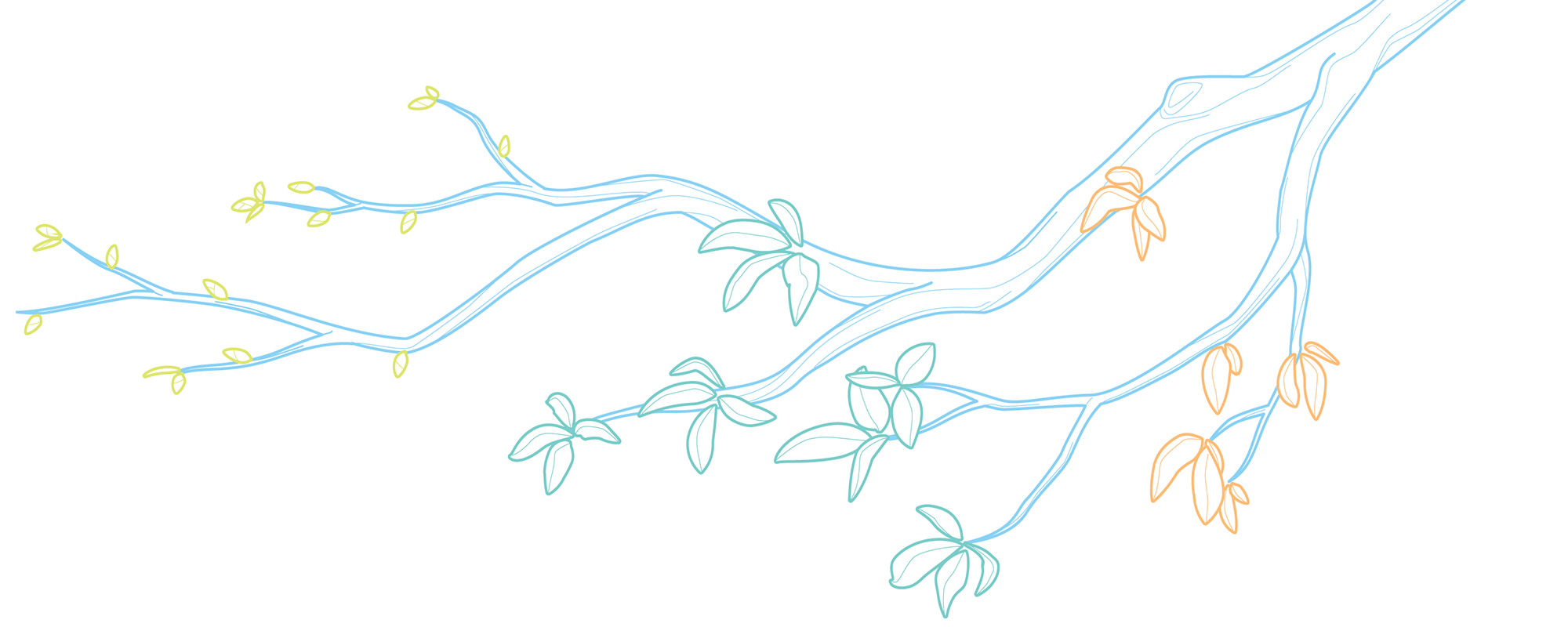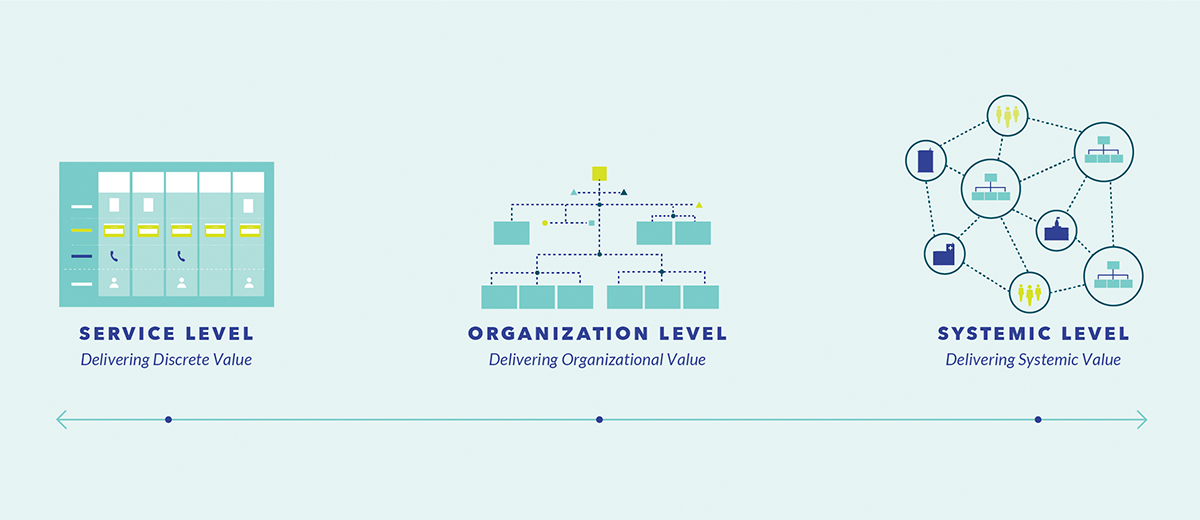
Ideas by Chris Ferguson
Selling Service Design in Canada
Author

- Chris Ferguson
- Founder
Signs of the changing seasons
From the front covers of the Harvard Business Review and Businessweek, it would appear that design has become a part of every facet of business. But, while Toronto is home to North America’s third-largest design workforce, service design remains a new phenomenon here, and across Canada.
Now, encouraged by the performance of market-leading corporations and start-ups, Canadian firms are beginning to turn their attention to an often-neglected piece of their operations: building a strategic design capability. In some of Canada’s largest companies, departments beyond marketing are taking an active role in understanding and improving their services from the perspective of customers. The public sector is following suit. In rarer instances, teams of practitioners are popping up within organisations under the banners of: ‘customer experience management’, ‘design strategy’ and ‘service design.’
Recognising this shift, we set out with the leaves beginning to change in the Autumn of 2015, to examine how Canadian firms are planning, organising, and executing internal service design projects and programs. We interviewed seven senior executives from top-tier Canadian organisations, from healthcare to retail to financial services. We wanted to hear first-hand how they were evolving their operations to respond to this new era of customer-centricity.
What we observed is that Canadian firms have begun to implement the tools and practices of service design to tackle their organisation’s toughest strategic priorities. At the same time, it’s clear that these pioneers still lack a consistent approach and vocabulary. Additionally, how, why, when and with whom their methods are applied varies significantly.

Moving from design thinking to design doing
For Canadian businesses willing to jump in, the application of service design is seen as a new way to differentiate in highly competitive or rapidly evolving markets.
But while design thinking and service design rhetoric has become more widespread in the last several years, the practical application of these methods is more difficult to implement. “Many years ago we established that ‘Customers First’ was the only real way we could differentiate ourselves as a service provider. Now our competitors say the same thing but it takes a long time and a lot of commitment to actually do it effectively,” said Judy Mellett, director of service strategy and design at one of Canada’s leading telecommunication companies, TELUS.
The ability to ‘actually do it’ looks very different, depending on the organisation and the industry in which it operates. We discovered that investments in strategic design activities exist along a continuum. At one end of the spectrum, service design is applied to deliver discrete value to a discrete part of a business. It is introduced once the scope has been established, involving a relatively small number of internal stakeholders. At the other end of the spectrum, service design is applied to reinvent systems or industries where multiple internal and external stakeholder groups will be impacted.
Where an organisation finds itself on this spectrum depends on how it approaches several key questions. These are the key questions that every service design pioneer must consider.

How big is the scope and scale of the challenge?
When we talk about scope and scale, we’re defining how an organisation views its potential reach (or scope of impact) on a given issue. In other words, how broadly (or narrowly) does a firm define the sphere in which to apply service design?
When it is defined more narrowly, organisations view service design as a tool for solving a particular business problem, most often within a particular business vertical. The business problem itself can have a long or short duration. “We always start by framing the business problem that needs to be addressed. What is the customer pain point? What’s the expected ROI?” said Anthony Wolf, associate vice president of private label brands at Canadian Tire. Starting here often provides tangible, business-focused results that fit within a firm’s existing frame of reference. It’s a great way to gain traction quickly.
Other organisations are applying service design to solve much more complex problems that are not easily defined. These initiatives look at the interactions that exist across a wide variety of stakeholders, both internally and externally.
In the mental healthcare space, we were bringing together people from housing, healthcare, justice, social services, and beginning to map how people were moving through the full system, what the key problems and pressure points were and what some of the key leverage points within the system were to be able to make changes.
Josina Vink
Organisations like Royal Bank of Canada (RBC) are considering the scope of desired impact (and therefore the scope of its projects) more broadly, to include a larger system of multiple channels, products, and business units that touch the customer. “The biggest benefit to the service design approach is that it creates client empathy and clarifies customer expectations based on their ultimate goal. Consumers expect seamless interactions and don’t really care about our organisational challenges. Their expectations are shaped by their experiences across sectors, as well as their last interactions with us. So it’s important to look as design as managing an ecosystem of experiences, across channels, across roles and across products,” said Lucie Cousineau, director of customer experience design and innovation at RBC.
Some organisations are defining the ‘ecosystem’ even more broadly to expand beyond the walls of their own operations. This is no easy task, especially in industries that are highly regulated. But Roche Canada proves that it is possible, and that it’s worth the effort for the benefit of the customer (or patient in their case). “If we discover there’s a series of diagnostic tests that are supported in one institution and not [in] another, we can connect those two institutions to start talking about how one institution does it and the other [one] doesn’t. So we can start connecting people and connecting teams even if we aren’t able to solve the problem,” said Anne Elsley-Swan, vice president of customer strategy at Roche Canada.
Multi-stakeholder collaboration means truly putting the user at the centre of the solution, and determining which organisations need to come together to improve that user’s experience across the system. Josina Vink is a former strategist and service designer at the Mayo Clinic and the Center for Addiction and Mental Health (CAMH) in Toronto. She defined “the notion of the system and the collection of services,” as a means of “moving beyond one organisation and one service experience to really look at the movement of one individual service user, through multiple services across service sectors.” For example, “in mental health, we were bringing together people from housing, healthcare, justice and social services, and beginning to map how people were moving through the full system, what the key problems and pressure points were and what some of the key leverage points within the system were to be able to make changes. Then we were working with that whole collection of individuals to make changes across organisations.”
All of these approaches are important in the advancement of service design as a practice. Tackling more narrowly defined business problems in the short term serves to create ‘quick wins’ and to illustrate the benefit of a service design approach. As confidence in the tools, language and methods of service design increase, there will be more opportunities to engage in larger systems thinking, applying service design to solve more systemic social and business issues.

Quick win or long-term strategy?
How quickly does an organisation need to show results? The definition of the time horizon can greatly impact an organisation’s confidence in applying service design. Organisations often start out by tackling a shorter-term initiative that can quickly and easily demonstrate results. “One way to sell service design internally is to look for the low hanging fruit. Fixing an existing opportunity that is already known, rather than finding new opportunities,” said RBC’s Lucie Cousineau.
However, there are limitations to the “quick win” approach. Often, the service design process itself is longer than a typical business strategy and analysis process, and requires a greater investment in time, resources and money. “Trying to sell that model with a short term financial viewpoint can be difficult,” said Roche’s Anne Elsley. “It’s too easy to say it’s taking too long and that we’re distracted from our core business.”
Interestingly, this sense of urgency to see results is often at odds with an organisation’s natural hesitance to put prototypes in market quickly, test them and iterate rapidly on the fly: a key element of the service design process. “People want perfection, and internally we get caught up with that. The notion of pushing out code that’s not perfect and fixing it on the fly is not common,” said James Gray-Donald, vice-president of sustainability at Bentall Kennedy, one of North America’s largest commercial real estate advisors. To get those quick wins with big results, sometimes a bit of calculated risk-taking is required.
We need a way to add structure and form to this information to make it more manageable and coherent so that we can make informed, reasoned decisions or provide advice to the elected government to make sure they’re successful
Jonathan Veale
Ministry of Health with the Government of Alberta
But for leaders who are willing to (or interested in) looking beyond short-term results, service design can play an even more interesting role. There are organisations that are using service design to identify new areas of focus or future opportunities beyond the scope of their day-to-day business challenges. This future-focused approach is often coupled with scenario planning: it applies a customer-centred lens to the definition of future business opportunities. It can also expand well beyond the business sphere to begin to look at larger change drivers that exist in the market and in more complex ecosystems.
The Government of Alberta is using this approach to help define priorities for the province. “We do a lot of scenarios work to engage executive teams around some of the big drivers of change that are impacting our system of healthcare here in Alberta,” said Oksana Kachur Niedzielski (specialist), and Jonathan Veale (director) of the Strategic Foresight and Innovation Unit at the Ministry of Health with the Government of Alberta. “We deal with huge volumes of information and complex, contradictory perspectives and data points. We need a way to add structure and form to this information to make it more manageable and coherent so that we can make informed, reasoned decisions or provide advice to the elected government to make sure they’re successful.” Service design is proving to be a powerful approach to provide human context and structure to the design of ambiguous and complex systems.

How will you measure success?
What gets measured gets managed. Most of the organisations we spoke to believe that there is value in determining clear KPIs for any service design project. Typically, in order to gain internal traction, those KPIs are aligned with what is already important to the business. If a firm’s most important measurement is a Net Promoter Score, a service design project should demonstrate an ability to positively influence that number. “Whatever metrics have been defined for the initial business problem you’re trying to solve should be the key metrics,” said Canadian Tire’s Anthony Wolf.
However, is tracking traditional ‘hard’ business metrics enough to capture service design’s impact? “It’s not just about the business and black-and-white numbers in the short term,” said Anne Elsley. Sometimes it’s necessary to move beyond those standard measures, or even redefine them. At Roche Canada, she said, “we built [our patient-centred strategy] into our balanced scorecard, so all company efforts were behind launching it as a strategic imperative. We looked at changing the traditional business measures: can our sales be measured in patient lives? Can our process quadrant talk about better insights to patients?”
For service design to be successful, firms must be comfortable with both outcomes. Even as it provides value to the business, how do you measure what you chose not to do as a result of the process?
Judy Mellett
TELUS
The application of service design is, by definition, intended to introduce a more qualitative and human perspective to traditional business thinking. Net Promoter Scores are fine, but service design uncovers the ‘why’ behind the score. Sometimes this leads to a new product or innovation, but sometimes it means choosing to walk away from something that your customers tell you doesn’t work. For service design to be successful, firms must be comfortable with both outcomes. Even as it provides value to the business, “how do you measure what you chose not to do as a result of the process?” asked TELUS’s Judy Mellett.
It’s clear that several organisations are already beginning to identify these less quantifiable, human-centred indicators. However, there’s no clear consensus on the best way to track them. And it becomes even less clear when you move beyond tracking the outputs at the end of a project and begin to look at tracking the process of the project itself. As Josina Vink argued, “we need measures for outcomes but we also need to evaluate the process.” How do participants feel throughout? Do they feel engaged or sidelined? Is the process creating positive or negative attitudes? These more abstract, process-oriented metrics become more important the more a firm is trying to manage for future engagement and long-term organisational (or brand) loyalty.

What are you trying to achieve, really?
What should a service design project’s output be? With much of service design terminology and practices historically rooted in product and interaction design, the expected output is often an improved or new product, feature or application.
And while this is a good place to begin, most firms we spoke with recognise that this view falls short. Anthony Wolf confirmed “a product-focus is not enough. For example, at Canadian Tire we did work in our paint department. We know that the selection of the paint itself is only a sliver of the overall experience. So if you’re only looking at that, you’re missing all the richness of insights around the customer: who’s shopping, the state of mind that they’re in, what they’re looking for, what they’re expecting, the decisions they’re trying to make. It’s like having super blinders on and ignoring most of what your customer is trying to balance.”
We know that the selection of the paint itself is only a sliver of the overall experience. So if you’re only looking at that, you’re missing all the richness of insights around the customer — who’s shopping, the state of mind that they’re in, what they’re looking for, what they’re expecting, the decisions they’re trying to make. It’s like having super blinders on and ignoring most of what your customer is trying to balance.
Anthony Wolf
Canadian Tire
These blinders are not uncommon. We often see prospective clients come with a request for a redesigned website or a new app. But before we engage in a project, we always ask, “What is that new website or app trying to do? What problem is it solving, or what need is it fulfilling?” If all an organisation really wants is a new skin on an existing website, then service design is probably not the right tool. If an organisation wants to truly understand its customer’s experience as they interact with the company (the good, the bad and the ugly), and how the organisation’s website fits within a much broader context of multiple channels with which the customer is interacting, then service design is exactly the right tool.
Using service design to understand the complete customer journey is incredibly useful for organisations that want to deliver a better experience. Even if the final output is a new website (or product), it will be designed with the totality of the customer experience in mind and grounded in the internal people and systems that make it tick. And beyond website or product design, there are opportunities to redefine the complete system of service delivery for firms willing to take on that challenge.
A prototype for leading Canadian organisations
Answering these questions helps firms to find the right balance for their organisations, and to apply service design appropriately on a case-by-case basis. No firm we spoke with falls exclusively at a single end of the spectrum. The pioneers who have been brave enough to tread into uncharted territory look for opportunities to apply service design where the greatest impact can be made that influences key internal decision makers. This can look very different from firm to firm. Choosing projects wisely and aligning stakeholder expectations from the start supports the growth and confidence of service design practice and growth in the positive impact that can be achieved.
This article is excerpted from Touchpoint Vol. 7 №3 — Selling Service Design. Touchpoint — The Journal of Service Design — is published by the Service Design Network and is available to purchase in print and PDF format and can be read online by SDN Members.
This article is excerpted from Touchpoint Vol. 7 №3 — Selling Service Design. Touchpoint — The Journal of Service Design — is published by the Service Design Network and is available to purchase in print and PDF format and can be read online by SDN Members.
Author

- Chris Ferguson
- Founder

Chris Ferguson
Founder